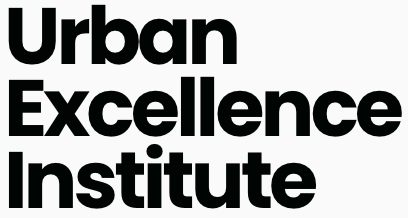
We Are Family: Family Dynamics 2.0
Different Family Types Have Unique Dynamics
The time wherein nuclear families (mom, dad, and one or more children) were seen as normal in the United States has long gone. Different family types are now much more acceptable than they were in the past, in addition to being more common. Being raised by a single mother or belonging to a mixed household is not as unusual now as it was before. The family dynamic has changed, and in this article, we’re going to talk about it.
What’s even more fascinating is that each type of family—there are six main ones on which everyone can agree—has a different family dynamic. If you’re currently experiencing family issues or are going through a significant change in your family structure, learning about your family type and considering how it influences your family dynamic might help you make sense of the situation. You can gain a better understanding of the strengths and weaknesses that your family is likely dealing with by taking a look at the type and dynamics of your family. To better understand family dynamics, some people may decide to start taking parenting courses or using online therapy.
Let’s Look at the Six Different Family Types
1. Nuclear Family
Two parents (often married or in a legal relationship) and their children form nuclear families, also referred to as primary or traditional families. Nuclear families may have one or more biological or adopted children, but the main focus is on the parents raising their children together in the same home.
Although it appears that nuclear families are decreasing, the 2016 U.S. Census data reveals that 69% of kids are still raised in atomic homes. Even if it doesn’t often happen that way, most people consider this the ideal family setting for raising kids.
Strengths of the nuclear family
- Now that the economy is stable, both parents generally work.
- Children brought up in a safe family environment
- Consistency
- Put communication first
Weaknesses of nuclear families
- Exclusion from the extended family can cause loneliness and stress and make it more difficult to resolve conflicts.
- Nuclear families may become overly concerned with their children and overlook other important matters as a result.
Strong and successful nuclear families can exist when both parents set excellent examples for their children. These kids frequently have a lot of advantages over children from less privileged families, which can help them succeed in life. However, like any family, nuclear families have their own problems to face. For instance, if parents exclude grandparents and other extended family members, their support system won’t be strong, making it difficult to go through difficult times.
2. Single Parent
Single parents and one or more children make up single-parent homes. In these situations, the parent is either divorced, widowed, or has never been married. In a paper published in 2004, Ellwood, D.T., and Jencks, C. discuss the rise of single-parent families since the 1960s, when divorce rates began to rise (and so did births happening out of wedlock). They propose that several factors include letting go of traditional gender norms, being comfortable with independence, and achieving the goal of parenting a child whether or not a partner is there.
Nowadays, it’s not unusual for a mother, father, or parent to raise a child alone, and single-parent households have their advantages as well as disadvantages.
Strengths of the single-parent family:
- Family members can grow super close.
- Learn to split home tasks.
- Both kids and parents can develop great resilience.
Weaknesses of single-parent families
- Families find it difficult to survive on one income, and some are dependent on social assistance.
- For parents who need to work full-time, finding affordable, high-quality childcare can be challenging.
Raising children alone can be challenging. Being a child can also be challenging if your parents are divorced or if you only knew one parent growing up. Families in this situation must make the most of their means and depend on one another for love and support.
3. Extended Family
Although most Americans would consider nuclear families to be the “traditional” family, extended families are significantly more prevalent and have been present for a long time in other cultures. Extended families are those that typically include children as well as two or more adults who are connected by blood or marriage. This frequently involves cousins, aunts, uncles, or other family members residing under the same roof.
Typically, extended families share a home to encourage social stability and advance common goals. Parents might, for instance, reside with their kids and their grandparents. As a result, the grandparents may be able to help with child care while the parents are at work. This enables the family to care for their parents in old age.
Strengths of the extended family:
- It’s essential to show the elderly respect and attention.
- More family members are close to helping with housework, caring for children, emergencies, etc.
- Social assistance
Weaknesses of extended families
- If parents are paying for multiple other people and children without receiving any more money, financial problems may arise.
- Depending on the setting, a lack of privacy
4. Childless Family
Families without children are those when both couples are unable to have children or do not want to. These families are usually ignored or excluded in the area of family types and dynamics (even though you can still have a family without children). Growing up, getting married, and having kids used to be the norm, but in the modern world, more people are delaying or giving up having kids altogether.
These unique families include working couples who like to sometimes care for other people’s children (such as nieces and nephews) rather than have their own children. They might also be adventurous couples who don’t think having children will fit well with their way of life. These relationships can exist between a husband and wife, a husband and wife, a wife and a wife, or a partner and partner.
Strengths of the childless family:
- Typically, they have more money available.
- There are no children to support.
- You get greater freedom to travel, go on adventures, and seek careers or education of your choosing.
- More time is spent together as a couple.
Weaknesses of childless families
- When all of their friends and family start having children, couples may feel alone or excluded.
- If you enjoy children, you could feel as though something is missing.
- Being childless due to infertility can be difficult for couples.
5. StepFamily
A stepfamily is made up of two different families that unite to become one. One divorced parent with children may marry a person who has never been married and has never had children, or two divorced parents with one or more children may combine their households.
Step-families have increased in popularity over time, much like single-parent households. Stepfamilies, like all of these different kinds of families, have their own set of strengths and problems that they must work through.
Strengths of the step families:
- The advantages of having two parents closely benefit children.
- Strong relationships can develop between kids and their new siblings or stepparents.
- Advantages of two incomes over single-parent households
Weaknesses of step families
- Adjustment can be challenging for both parents and children.
- Problems might arise when parents try to discipline each other’s children.
- Possibly chaotic or inconsistent.
It can be challenging to move from a nuclear or single-parent family to a stepfamily. It might be difficult to adjust to new members of your family, especially if they are part of another family. However, some children will eventually grow to accept their stepparents and step-siblings as members of the family and develop close relationships with them.
6. Grandparent Family
The grandparent family is the last category of family. When one or more grandparents are raising their grandkids, that situation is referred to as a grandparent family. Despite their uniqueness, grandmother-headed families are becoming more widespread. They said that in the United States, almost 2.4 million grandparents are raising 4.5 million children, according to census data.
This situation arises when parents are either unable or unwilling to properly care for their children. For instance, the parents may be ill, too young to care for the child, struggling with a substance use disorder, or even dead. Thankfully, grandparents step in and take on the role of parents for their grandkids in these situations.
Strengths of the grandparent family:
- There is a strong bond between grandparents and grandkids.
- Avoids putting children in foster care or other settings.
Weaknesses of grandparent families
- Grandparents may struggle to make ends meet if they work part-time or not at all.
- It may be challenging for them to keep up with young children or discipline them as they get older.
The upbringing of grandchildren by grandparents can be challenging. But it can be beneficial to both children and grandparents to have support.
Conclusion
Whatever family type you identify with, each has its own set of advantages and disadvantages. This is usually most obvious to persons who have gone through one or more changes in family type during their lives and can relate to how unique each family dynamic can be. Whether you are part of a same-sex family, an interracial family, a binuclear family, a multigenerational family unit, or have polyamorous parents, each family is unique in its own way.
Individual or family therapy can help persons dealing with changes in family type/dynamics. BetterLYF, an online counselling service, can provide an outlet for people who are having difficulties with their relationships.
Seeking help is a sign of courage. Don't let self-limiting beliefs hold you back from a life you deserve. Avail online therapy to become happier and better. Learn how
This article originally appeard in
BetterLyfe.









Curious about our programs?
Curious?

Urban Excellence is a 501(c)3 nonprofit organization that is dedicated to making world class personal growth and development programs, training, coaching, resources and services available and accessible for all.
VISIT
2009 Porterfield Way
Suite C
Upland, CA 91786
CONTACT
310-773-6140
Info@urbanExcellence.net

Urban Excellence is a 501(c)3 nonprofit organization that is dedicated to making world class personal growth and development programs, training, coaching, resources and services available and accessible for all.
VISIT
2009 Porterfield Way, Suite C
Upland, CA 91786
CONTACT



